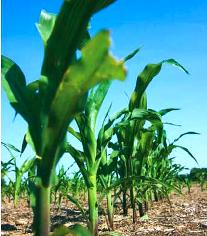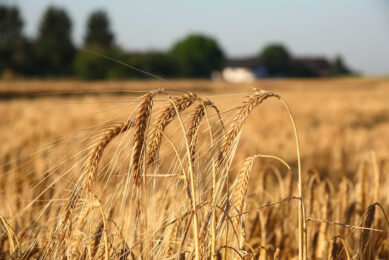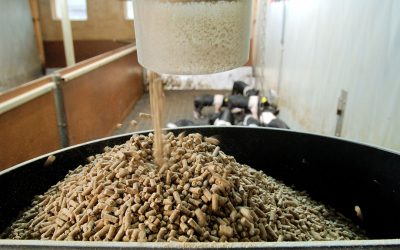GMOs: Should the European Union give in?

European livestock producers and feed compounders are in a quandary. The European Union’s famously strict policy on Genetically Modified Organisms (GMOs) is at such odds with the rest of the world’s protein feed producers that they’re at risk of being completely left out of the market. By Meghan Sapp
especially have suffered from increasing feed costs as imports of maize gluten
has come to
Atlantic states, who too depend on maize gluten for much of their protein, have
found themselves with few alternatives and skyrocketing feed prices. The EU only
produces 25% of its feed protein needs and relies on the world’s largest
producers like Argentina, Brazil and the US to supply the remainder. Those
countries in recent years have increasingly approved and begun cultivation of
GMOs that the EU has yet to—if ever—approve. If the EU keeps it strict policy on
imports that contain GMOs, the situation for pig and poultry producers will only
get tougher.
To approve a
certain GMO, the EU uses rigorous processes that include expert opinions not
only from the European Food Safety Agency but also at member state level; a
process that can takes several years. Countries like the US and Argentina handle
the GMO issue much quicker, which creates a backlog of sorts for the EU’s
process but also a growing list of potential “contaminants” in imported
feedstuffs. In the past, exporters who wanted to take advantage of the higher
prices they could charge Europeans for keeping to strict guidelines would go to
great lengths to reach the EU’s specifications. But as more and more nonapproved
GMOs reach the marketplace, it’s getting more difficult for exporters and
becoming less appealing to do so.
That’s especially true when countries with huge appetites for grain and protein
like China are happy to import en masse without any worries over whether or not
the shipment contains GMOs. “It is difficult for exporters to prevent the mixing
of products,” says Frans van Dongen, Director of International Affairs for the
PVE, the Netherlands’ Product Boards for Livestock, Meat and Eggs. “They mix
feed especially for us to our specifications with strict regulations and we pay
more for it. Then the order is shipped, but if the feed is transported with
others, there can be mixing. If that happens, then the value of the shipment
becomes zero.” And that’s a risk exporters are less and less interested in
taking.
Europe’s
feed industry is now sounding the alarm that the situation with maize gluten,
which brought imports from an estimated 2.9 million metric tonnes in 2006 to
zero by October 2007, will be worsened by a similar situation with soya. And
this time it won’t be just the Atlantic states like Ireland, the UK, Spain and
the Netherlands who will suffer from a shortage in soya availability, but it
will be all of Europe’s livestock industries, says Alexander Doring, Secretary
General of the European Association of Animal Feed Compounders, FEFAC.
“Everyone’s using soybean meal. There are no alternatives,” says Doring. The
reason for the sudden panic is a recent spate of approvals for new GMO soya in
the US, Argentina and Brazil that are set to hit the market after the 2009
harvest, the biggest culprit being Monsanto’s Roundup Ready 2 soyabean.
as seedcompanies build up their seed supplies during multiplication
in time for the 2009 planting season. According to a recent report by the
European Commission’s Directorate General for Agriculture, the effects of
reduced soya availability could be devastating for Europe’s livestock
industries. It said that at most enough acres could be diverted toward protein
crops to make up for another 10% to 20% of Europe’s needs, falling well short of
even 50% of the region’s total demand.
Despite the
European Food Safety Agency having received an application for approval for the
Roundup Ready soyabean in November 2006, its approval isn’t expected until after
the 2009/2010 marketing year, according to the report. The study looked at
impacts on the EU’s livestock sectors as a result of the non-approved GMOs on
the world market, taking a three-fold look at the issue: minimal impact, medium
impact and worst case scenario. The report immediately disregards the likelihood
of the minimal impact scenario, hoping for the best with the medium impact
scenario.
If the study is
right, under the medium impact scenario, Brazil
could make up for about 7
million tonnes worth of soya imports that once belonged to the US and Argentina,
leaving a 9.9 million tonne deficit of soyameal equivalent. Rapeseed meal and
sunflower meal could make up for much of the deficit and leave the EU only 3.3
million tonnes short of its soyameal demand. Under the worst case scenario,
Brazil would not be able to help make up the deficit from the US and Argentina,
leaving the EU with a 32.2 million-tonne deficit that would only see rapeseed
and sunflower meal taking up the slack to the tune of the same 6.6 million
tonnes.
In the short term under these scenarios, the pig
sector would face slightly
but under the worst case would see production fall 29% in 2009 and 34% in 2010
with overall consumption dropping 24% in 2009. Pork imports would have an effect
by 2010, it said. The situation is just as grim for poultry producers. Again
there would be limited impacts under the medium impact scenario but the worst
case scenario would see production drop 29% in 2009 but as much as 44% in 2010
that would be covered by imports. In recent years, the US and Argetina
have increasingly approved and begun cultivation of GMOs that the EU has yet to
– if ever – approve.
hardly affected under the medium scenario and would actually benefit from
increased demand and higher consumption under the worse case scenario as
consumers look to find replacements for expensive or imported pork and poultry.
In an effort to keep Europe’s feed and livestock industries from this seemingly
perilous fate, Doring says his organisation and many of those in the member
states are working hard to bring the situation to the attention of policy makers
in Brussels and the capitals. What they’re looking for, he says, is a kind of
pragmatic solution to the zero-tolerance policy, which some say could be as low
as 0.9% to make a real difference for industry, but they’re running into
roadblocks everywhere they go.
The main
problem is that by seeking to increase the tolerance level of non-approved GMOs,
van Dongen says it has reopened the debate about EU GMO policy and the
industries are at risk of being seen as pro- GMO in a society that is decidedly
against them. Despite a precedent of 0.9% GMO tolerance in organic foods for
human consumption, policymakers aren’t hearing of it.
“We are aware of
the difficulties caused to the feed sector by the issue of asynchronous
authorisations and the possible contamination with EU non-authorised GMOs,” says
Haravgi-Nina Papadoulaki, the European Commission’s spokeswoman on health. “A
debate on the issue took place in the last November Agriculture Council, where
it was made clear that it is undesirable to review our (GMO) legislative
framework – one of the strictest in the world – at this stage with a view to
simplifying the scientific evaluation phase.”
to the zero-tolerance issue without re-opening the GMO debate, but Papadoulaki
says that discussion is still ongoing. “The Commission and the member states
discussed a number of possible ways to address the problem including closer
cooperation with our international trade partners on this issue, whereas
discussions are continuing with between the Commission and EFSA to see if the
authorisation procedure could be streamlined and made more efficient. Without
compromising the quality of our safety assessments for new GMOs,” she said. “The
(EU) process is taking so long, the problem will be here long before there’s a
solution,” he said, despite being optimistic that the EU will find one.
He says compound feed prices have gone up 80% in the 12 months
to last October, partly due to energy prices and producers choosing to grow
energy crops leaving fewer acres for oilseeds. Protein prices have gone up about
50% while cereals have already gone up over 100%. “The pig sector is already
suffering, reserves are already almost gone, and it would be very difficult for
industries to recover,” says van Dongen, though he admits that those producers
who would survive would be stronger for it. “There’s no guarantee that the two
year gap (between GMOs reaching the market and EU approval) wouldn’t repeat
itself as more GMOS are approved in
other countries. The pragmatic solution is a long-term
solution,” he said.











